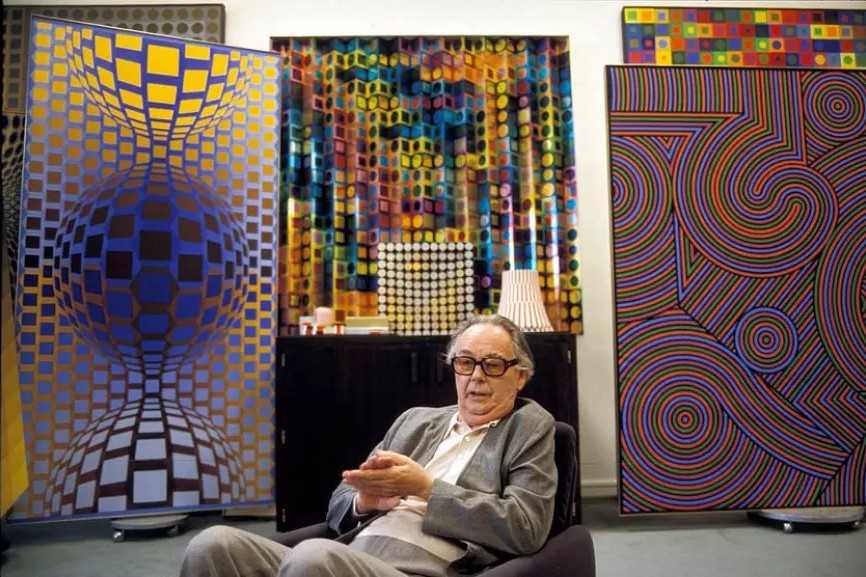The XX. innovator of 19th century painting, he is revered as the father of op art, i.e. optical art, his pictures hang on the walls of the largest museums around the world. Győző Vásárhelyi, i.e. Victor Vasarely, was born 118 years ago. He lived and worked in Paris for most of his life, yet he always felt that he belonged to Hungary, reports Magyar Nemzet.
There are not many Hungarian painters whose paintings can be found in the world's most important public collections, from Budapest to London or Buenos Aires to Jakarta in Indonesia. However, Victor Vasarely is like that. Csiszár (later Vásárhelyi) Győző was born on April 9, 1906 in Pécs - or rather Pécs, because he himself always insisted on the older conjugation form. His family moved to Budapest in 1908, where he got acquainted with painting at a very young age, starting in the twenties, then turned to advertising graphics, joined the Studio of Sándor Bortnyik, and in 1930 his works were exhibited at the Museum of Applied Arts.
In the same year, he moved to Paris, where he became world famous and remained a citizen of the French capital until his death. Although for this reason he is often called a "French painter of Hungarian origin", he himself always proudly accepted his Hungarian status, and when he returned to his country for the first time after a long time in 1968, he spoke to the press without any accent. His generosity and artistic attitude are characterized by the fact that in the same year he donated 123 screen prints to the Museum of Fine Arts, and in 1987 another 411 works to the Vasarely Museum , in the opening of which he personally participated. His museum in Pécs, which opened in 1976 in the house in Káptalan Street where he was once born, also preserves many of his works.
His art is characterized by the masterful mixing of colors and the perspectival effect that often creates an optical illusion, which is both modern and, we can safely say, timeless.
Its peculiarity is the use of geometric shapes, the variation of circles, rhombuses, squares, triangles, which creates the appearance of depth and movement: the kinetic effect is created by the combination of colors and shapes. His decades-old works do not seem outdated, in fact, they create a feeling as if they were made just yesterday.
When he turned 85 in 1993, he said in a message to MTI: "I think with special love of my native country, which I have never forgotten, and whose memory still gives me strength to continue my work, despite the problem of my illness. No matter how much recognition I have received, no matter how much my work has been honored, I have always believed that I was honored as a Hungarian person, and these roots are certainly the source of my creative art."
I still feel like I belong to Hungary. On this day, I think of this country and the ties to it with the greatest love and the deepest emotions.
Vasarely stated.
The artist died in 1997, but his works can be found not only in museums. His style is also perfectly suited to the postmodern era, so his works echo from a thousand places: in the form of sculptures, murals, subway stations, bags and a wide variety of objects. Vasarely has now become part of pop culture, but we can rightly be proud of him as one of the greatest Hungarian artists.
Photo: archive of György József Farkas / ma7.sk













